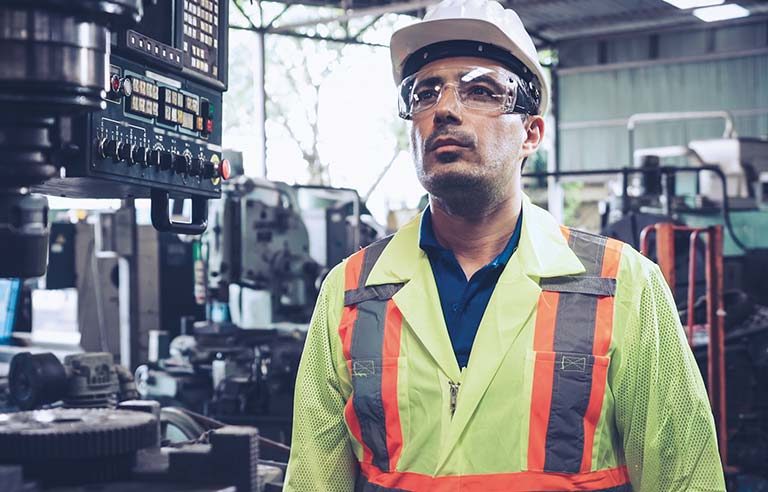Trends in personal protective equipment 2021
'A big move to better PPE'

When it comes to personal protective equipment, the future is “in the ever-changing needs of the customer,” says Charles Johnson, president and CEO of the International Safety Equipment Association, a trade association of manufacturers of PPE and other safety equipment. “End-user research is vital to product development, as we need to understand from our workers what they need from their PPE.”
What hasn’t changed? The need for PPE to fit properly – and comfortably. “If it’s not comfortable, it won’t be used or worn, and therefore won’t protect the worker,” Johnson said, adding that “PPE manufacturers are adapting safety solutions to changing needs and environments of the worker, considering their many varying characteristics, preferences and working conditions.”
Here, Safety+Health asked PPE manufacturers what trends they’re seeing, what customer concerns they’re hearing and what’s on the horizon for PPE safety solutions.
What recent PPE trends have you observed?
“We’re seeing a big move to better PPE innovations. That means lighter, thinner protection from cuts, abrasions and even impacts. Customers want solutions that do more than keep their employees safe. Gloves and sleeves that are too thick or uncomfortable or that get in the way of the job are fast becoming a thing of the past.
“PPE that can help to protect workers in the heat is becoming more prominent as well. Employers are looking for proactive heat safety approaches, not just reactive.”
– Sarah Anderson, director of product management, Magid
“We’re seeing just how important buying American-made products is for our customers. This has been driven by negative experiences of importing PPE from overseas during supply shortages, a desire to support local businesses and the economy, and the need for high-quality protection that customers can trust will perform properly and is tested to our governing regulatory bodies.”
– Jack Hartley, content specialist, RPB Safety
“Three key trends we are currently seeing in the PPE category that are consistent across geographies/product lines are:
Supply chain stability: Due to COVID-19, PPE manufacturers have experienced exponential demand for their products at a time when they were also experiencing capacity constraints due to social distancing and other preventative measures at facilities to curb the spread of COVID.
Cost volatility: Due to the exponential demand for PPE products, costs such as raw material, converting and freight/shipping have exponentially increased throughout the pandemic. Even though we see signs of that stabilizing and decreasing, there still is uncertainty to whether costs will return to pre-COVID rates by 2022.
Digital presence: We have seen choosers/users increase reliance on digital content/e-commerce to evaluate and make PPE decisions versus their DSR/sales rep.”
– Mazen Kachlan, lead of Global PPE, Kimberly-Clark Professional
“There has been a recent focus on the need for higher-level protection, across all PPE, going above what has been standard. We have seen an increased awareness on the importance of proper PPE and the protection it provides, leading to users making a larger upfront investment in PPE. For example, more than half of fatal work-related traumatic injuries are a result of falls, creating more mandates on climbing style helmets to keep workers safe. This growing trend in Type 2 Helmet adoption protects the user from top and side impact.
“Additionally, there are increasingly more products aimed at varied levels of exposure, both acute and immediate – trends that are highlighting the importance of adoption.”
– Zach Richman, group product manager, Milwaukee Tool
“One major trend is a shift to prevention as a best practice over strictly relying on PPE for ‘after-the-fact’ protection. Objects at heights (dropped object prevention) is a great example – putting a focus on the solutions that can keep objects from falling in the first place can make worksites far safer than hard hats and steel-toed boots.
“Another trend we’re seeing is a move toward lower-profile solutions across all categories. An example here is the rising use of bump caps, which can be worn low and tight to the head for protection in environments where minor head injuries can occur but hard hats are not required.”
– Allie Thunstrom, field product specialist, Ergodyne
Post a comment to this article
Safety+Health welcomes comments that promote respectful dialogue. Please stay on topic. Comments that contain personal attacks, profanity or abusive language – or those aggressively promoting products or services – will be removed. We reserve the right to determine which comments violate our comment policy. (Anonymous comments are welcome; merely skip the “name” field in the comment box. An email address is required but will not be included with your comment.)

